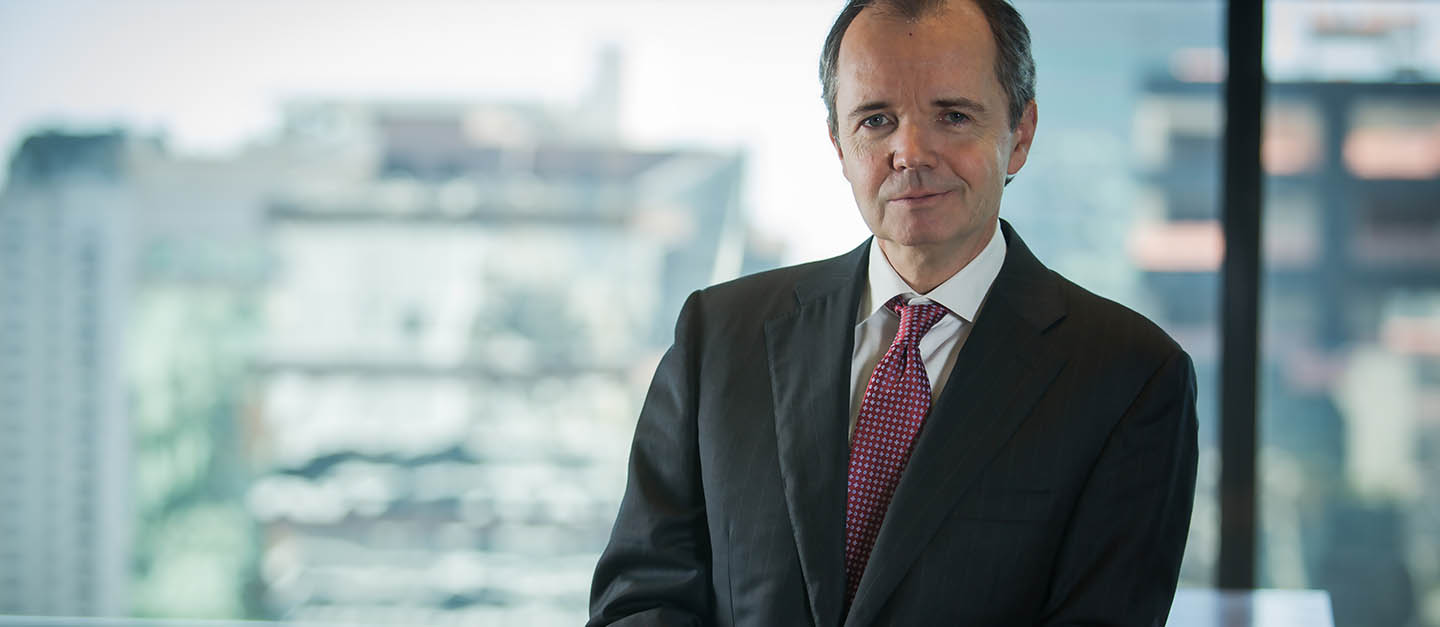What is the biggest misconception, or most significant blind spot, when assessing the growth outlook for Latin America?
People don’t realize the strength of the reformist mindset within Latin America in terms of getting away from state intervention and moving toward free markets, private enterprise and private capital.
After decades of trying different models, countries in the region are moving away from government interventionist concepts, which held many countries back. While there’s lots still to be done, these movements probably have not been widely identified due to short-term noise.
Not many international or institutional investors have as significant a local presence as ours. This presence allows us to go beyond the big headlines and see what is really happening – the underlying trends of where the region is going in the long term.
Being global, but at the same time local in terms of understanding, is key. It ensures we see the long-term trends but also don’t underestimate the risks we might find in the region.
We’re now 30 people in São Paulo and, in terms of assets and in terms of people, the largest institutional investor in LATAM. You cannot view emerging markets through the lens of investing in Canada, the U.S. or Europe. You have to be much more alert, and I think that is sometimes underestimated.
What industries pose the most attractive growth opportunities in Latin America?
There’s a combination of drivers that make two big areas interesting.
The first is a combination of infrastructure, energy and resources. This area has been neglected for decades because the state wanted to play an important role, resulting in very inefficient management, corruption and lack of resources.
It’s a huge area: roads, airports, ports and, in some cases, mining resources. It even goes into energy infrastructure, like electricity transmission lines, or oil and gas pipelines. Throughout the region, there is a strong drive to let private enterprise invest, manage, and do things like extract oil and gas and build infrastructure.
The second area is related to the growing middle classes. As growth creates and distributes wealth, there is pent-up demand not only for consumer goods but also for services that improve the quality of life, such as education and healthcare.
These are sectors where private capital will become more active and growth will be gradual but steady.
This year marks the fifth anniversary of our São Paulo office. What has been the most significant change to CPP Investments’ strategic approach to investing in the region since our office opened?
I think the most remarkable thing has been our strategic consistency, even when it’s meant being contrary in the market.
At one point everybody was opening offices and investing in Brazil, but it was a bubble moment. They came in with the boom and left with the bust – the worst recession in decades, which came along with a corruption scandal.
For people reading the headlines from far away, it looked scary. But we saw the turmoil as short term. Long term, we were always positive on the economic side.
We kept a consistent strategy of building the local team when other international investors were closing their offices. We kept hiring at a time when no one was really hiring; and started to invest when we thought the time was right, and the valuations and the returns were there.
What is the biggest misconception, or most significant blind spot, when assessing the growth outlook for Latin America? People don’t realize the strength of the reformist mindset within Latin America in terms of getting away from state intervention and moving toward free markets, private enterprise and private capital. After decades of trying different models, countries in the region are moving away from government interventionist concepts, which held many countries back. While there’s lots still to be done, these movements probably have not been widely identified due to short-term noise. Not many international or institutional investors have as significant a local presence as ours. This presence allows us to go beyond the big headlines and see what is really happening – the underlying trends of where the region is going in the long term. Being global, but at the same time local in terms of understanding, is key. It ensures we see the long-term trends but also don’t underestimate the risks we might find in the region. We’re now 30 people in São Paulo and, in terms of assets and in terms of people, the largest institutional investor in LATAM. You cannot view emerging markets through the lens of investing in Canada, the U.S. or Europe. You have to be much more alert, and I think that is sometimes underestimated. What industries pose the most attractive growth opportunities in Latin America? There’s a combination of drivers that make two big areas interesting. The first is a combination of infrastructure, energy and resources. This area has been neglected for decades because the state wanted to play an important role, resulting in very inefficient management, corruption and lack of resources. It’s a huge area: roads, airports, ports and, in some cases, mining resources. It even goes into energy infrastructure, like electricity transmission lines, or oil and gas pipelines. Throughout the region, there is a strong drive to let private enterprise invest, manage, and do things like extract oil and gas and build infrastructure. The second area is related to the growing middle classes. As growth creates and distributes wealth, there is pent-up demand not only for consumer goods but also for services that improve the quality of life, such as education and healthcare. These are sectors where private capital will become more active and growth will be gradual but steady. This year marks the fifth anniversary of our São Paulo office. What has been the most significant change to CPP Investments’ strategic approach to investing in the region since our office opened? I think the most remarkable thing has been our strategic consistency, even when it’s meant being contrary in the market. At one point everybody was opening offices and investing in Brazil, but it was a bubble moment. They came in with the boom and left with the bust – the worst recession in decades, which came along with a corruption scandal. For people reading the headlines from far away, it looked scary. But we saw the turmoil as short term. Long term, we were always positive on the economic side. We kept a consistent strategy of building the local team when other international investors were closing their offices. We kept hiring at a time when no one was really hiring; and started to invest when we thought the time was right, and the valuations and the returns were there.







